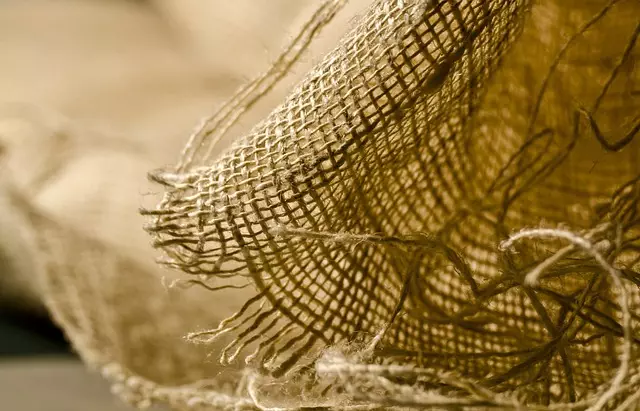Muscle soreness from physical exertion or injury can be significantly alleviated with natural supplements like kratom. Green Malay and White Maeng Da strains of kratom are often compared due to their effectiveness in managing muscle pain. Green Malay kratom offers a balanced effect with analgesic properties that don't overly sedate, making it a preferred option for many. White Maeng Da, known as "Pimp Leaf," stands out for its potent pain-relieving benefits and stimulating effects, particularly useful for severe muscle soreness. When considering these strains for recovery, it's crucial to use them responsibly, adhere to proper dosing, and consult healthcare professionals. The choice between Green Malay and White Maeng Da should be based on individual needs and preferences, with safety as a priority. Both strains can play a role in a holistic post-workout recovery routine when combined with good nutrition, hydration, and rest, potentially enhancing overall well-being and athletic performance. Remember to source high-quality kratom from reputable providers to ensure safety and efficacy.
Muscle soreness can be a persistent companion for many, particularly those who engage in rigorous exercise or physical labor. Exploring effective relief strategies is crucial for maintaining an active lifestyle without the hindrance of pain. This article delves into the potential benefits of kratom supplements, known for their alkaloid content, in managing post-exercise muscle soreness. We will dissect the science behind muscle soreness and how kratom might offer relief, with a particular focus on the comparative effects of Green Malay vs. White Maeng Da strains. Additionally, we’ll guide you through integrating these supplements into your recovery routine, emphasizing safety and efficacy. Join us as we navigate the intersection of natural remedies and athletic recovery.
- Understanding Muscle Soreness and the Role of Kratom Supplements
- Green Malay vs. White Maeng Da: A Comparative Analysis for Muscle Soreness Relief
- Integrating Kratom into Your Post-Workout Recovery Routine Safely and Effectively
Understanding Muscle Soreness and the Role of Kratom Supplements

Muscle soreness, a common experience for individuals engaging in physical activity or those recovering from injuries, can range from mild discomfort to debilitating pain. This soreness, often referred to as delayed onset muscle soreness (DOMS), is typically associated with microtrauma or inflammation within the muscle fibers that occur during intense exercise. Understanding the mechanisms behind muscle soreness is crucial for developing effective relief strategies. One such strategy that has gained attention is the use of kratom supplements, specifically the strains green Malay and white Maeng Da.
Kratom, derived from the leaves of Mitragyna speciosa, a tree native to Southeast Asia, has been traditionally used for its medicinal properties. Two primary alkaloids found in kratom, mitragynine and 7-hydroxymitragynine, are believed to contribute to its analgesic effects, making it a potential aid for muscle soreness relief. The green Malay kratom strain is known for its balanced effects, offering both stimulating and soothing properties, which can be beneficial in managing pain while maintaining energy levels. On the other hand, white Maeng Da kratom is celebrated for its potent analgesic and energizing qualities, which may help users cope with muscle soreness without the sedative side effects often associated with pain management. Users often report that these strains can alleviate muscle pain, reduce inflammation, and improve overall recovery times, making them valuable supplements for those actively involved in physical activities or recovering from intense workouts. When considering the use of kratom for muscle soreness relief, it is important to adhere to appropriate dosages and consult with healthcare professionals to ensure safety and efficacy.
Green Malay vs. White Maeng Da: A Comparative Analysis for Muscle Soreness Relief

When exploring natural remedies for muscle soreness relief, the comparison between Green Malay and White Maeng Da kratom supplements is particularly relevant. Both strains are derived from the Mitragyna speciosa plant and have distinct alkaloid profiles that can influence their effects on the body.
Green Malay kratom is known for its potent analgesic properties, which make it a popular choice among individuals seeking relief from muscle soreness. Its effectiveness in this area can be attributed to the presence of 7-hydroxymitragynine, a significant alkaloid that contributes to the plant’s painkilling abilities. Users often report a balanced energy and euphoria alongside the analgesic effects, which can be beneficial for those experiencing muscle soreness due to physical exertion or recovery from injury.
On the other hand, White Maeng Da kratom is renowned for its stimulating effects while also providing pain relief. This strain’s name translates to “Pimp Leaf,” reflecting its robust and strong nature. It contains a high concentration of mitraphylline, which can enhance mood and focus, as well as alleviate discomfort. The unique balance of its alkaloids provides a more uplifting experience compared to other strains, making it suitable for those who need to manage pain without feeling overly sedated, especially in contexts where mental clarity is paramount.
Both Green Malay and White Maeng Da kratom have their own unique advantages when it comes to muscle soreness relief. The choice between the two should be based on the individual’s specific needs, desired effects, and personal tolerance. It is essential to approach the use of these supplements with caution, adhering to recommended dosages and consulting with a healthcare professional before incorporating them into one’s wellness regimen.
Integrating Kratom into Your Post-Workout Recovery Routine Safely and Effectively

When it comes to post-workout recovery, muscle soreness can be a significant hindrance to both athletic performance and daily comfort. To mitigate this, many individuals are turning to natural supplements like kratom, which has gained popularity for its potential analgesic properties. Within the kratom spectrum, Green Malay and White Maeng Da varieties are often compared for their effectiveness in alleviating muscle soreness. Green Malay Kratom is renowned for its balanced alkaloid profile that may offer both pain relief and a stimulating effect without overpowering sedation. On the other hand, White Maeng Da kratom is celebrated for its potent analgesic properties, which can be particularly beneficial for those experiencing intense muscle soreness post-exercise.
To integrate kratom into your post-workout recovery routine safely and effectively, it’s crucial to consider dosage and frequency based on individual tolerance and the specific effects desired. As with any supplement regimen, start with a lower dose to gauge your body’s response before gradually adjusting as needed. It’s also important to consult with a healthcare provider before incorporating kratom into your routine, especially if you have pre-existing health conditions or are taking other medications. Additionally, ensure that the kratom product you choose is of high quality and from a reputable source to avoid contaminants or adulterants. By carefully monitoring your intake and combining kratom with proper hydration, nutrition, and rest, it can be a valuable component in your holistic approach to muscle recovery and overall well-being.
When exploring the realm of muscle soreness relief, particularly post-workout recovery, the discussion often leads to the potential benefits of kratom supplements. The article has delved into the intricacies of understanding muscle soreness and its management through these supplements. A key point of focus was the comparative analysis between Green Malay and White Maeng Da kratom strains, both of which have garnered attention for their unique properties in alleviating muscle discomfort. The safest and most effective methods for integrating these supplements into one’s post-exercise routine were also examined to ensure optimal recovery with minimal side effects. In conclusion, while further research is always beneficial, the insights provided here offer a promising outlook on the role of kratom supplements like Green Malay and White Maeng Da in managing muscle soreness, potentially serving as a valuable addition to one’s wellness regimen.






